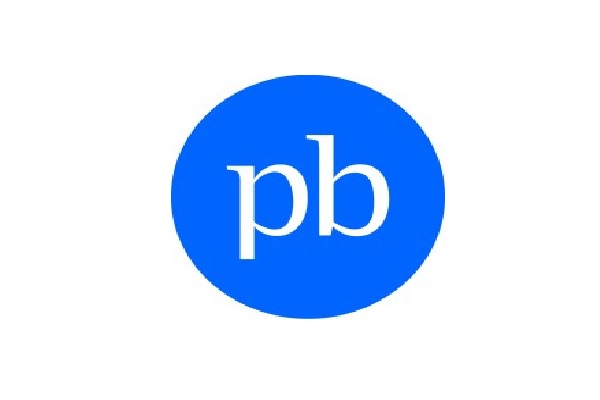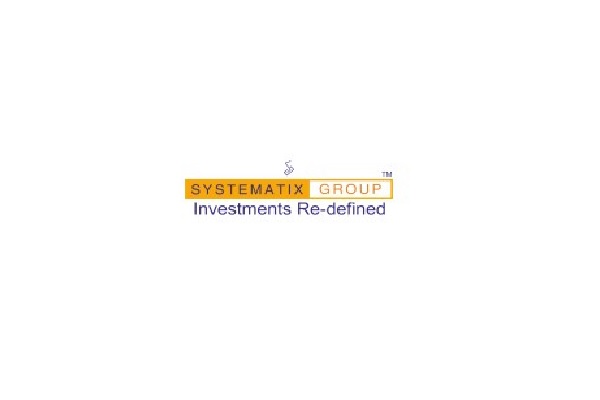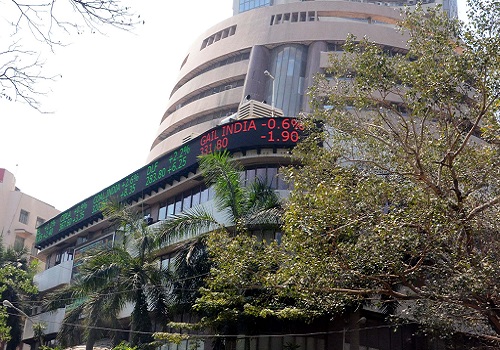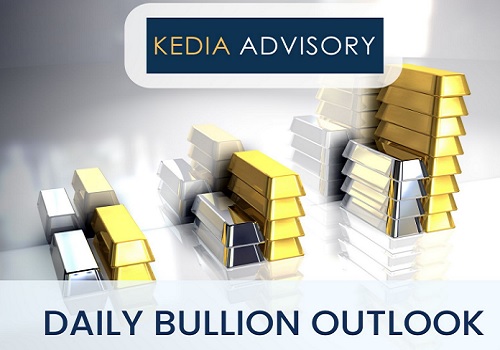Turmeric trading range for the day is 16708-17548 - Kedia Advisory

Gold
Gold prices surged by 0.6% yesterday, settling at 71340, buoyed by geopolitical tensions and support from momentum-following funds. Concerns surrounding Russia/Ukraine tensions and instability in the Middle East have bolstered gold's safe-haven appeal. Moreover, a shift in focus from lower rate cut expectations to persistent inflation concerns has contributed to the metal's upward momentum. Investors are eagerly awaiting signals from the Federal Reserve's policy meeting minutes and U.S. inflation data, scheduled for release on Wednesday, to gauge the interest rate trajectory. Notably, China's central bank's addition of 160,000 troy ounces of gold to its stockpiles in March has reinforced the market's belief in sustained official sector demand, driving the current rally in gold prices. The increase in China's gold reserves to $161.07 billion from $148.64 billion underscores this trend. In 2023, global central banks collectively purchased 1,037.4 tonnes of gold, although this represented a 4% decrease from the record levels seen in 2022. Notably, the People's Bank of China emerged as the largest government sector buyer of gold in 2023, acquiring 7.23 million ounces, marking the country's most substantial single-year recorded additions since 1977. From a technical standpoint, the gold market is currently witnessing short covering, with a decrease in open interest by -0.31% and a price increase of 428 rupees. Support for gold is observed at 70970, with potential downside testing at 70605 levels. Conversely, resistance is anticipated at 71720, with a breakout possibly leading to testing 72105 levels.
Trading Ideas:
* Gold trading range for the day is 70605-72105.
* Gold prices hit a record high on geopolitical worries and support from momentum-following funds
* Geopolitical risks related to Russia/Ukraine and the Middle East are still playing a supporting role
* China's central bank increased its gold holdings in March
Silver
Silver prices rallied by 0.7% in yesterday's trading session, closing at 82450, following the upward trend in gold prices, bolstered by increased consumer and industrial demand. The outlook for inflation among Americans last month was mixed, with expectations of larger price rises across various goods and services, alongside concerns about potential debt payment defaults, as highlighted by a report from the Federal Reserve Bank of New York. Furthermore, U.S. small-business confidence dipped to its lowest level in over 11 years in March, amidst growing apprehensions surrounding inflation, according to a survey. Futures traders have scaled back their expectations for Federal Reserve rate cuts this year to the lowest level since October, reflecting ongoing strength in the U.S. economy. Moreover, the likelihood of a first 25 basis point cut in June declined to 49%, from 57% a week prior, according to CME Group data. In China, the Shanghai Gold Exchange announced an increase in margin requirements for some silver futures contracts from 10% to 12%, effective from settlement on April 9. Additionally, trading limits for certain silver futures contracts will be raised from 9% to 11% in the next trading session. From a technical perspective, the market observed short covering, with a decrease in open interest by -1.46% to settle at 27373, accompanied by a price increase of 575 rupees. Support for silver is currently seen at 81780, with potential downside targets at 81110. On the upside, resistance is anticipated at 83080, with a potential breakout leading to a test of 83710.
Trading Ideas:
* Silver trading range for the day is 81110-83710.
* Silver gains tracking the rally in gold, buoyed by increased consumer and industrial demand.
* U.S. small-business confidence slipped to the lowest level in more than 11 years in March amid rising concerns about inflation
* Futures traders have reduced bets on how much Fed will cut rates this year to the lowest level since October.
Crude oil
Crude oil prices experienced a modest decline of -1.07%, settling at 7102, attributed partly to a slight easing of tensions in the Middle East. Israel's withdrawal of troops from southern Gaza has contributed to a sense of relative calm, albeit with ongoing ceasefire negotiations with Hamas. Azerbaijan's oil production figures for March indicate a marginal increase to 481,000 barrels per day, still below the country's OPEC+ quota for 2024. This, combined with ongoing voluntary production cuts by OPEC+, contributes to a tightening supply scenario in the market. Additionally, Mexico's Pemex decision to reduce crude exports by 330,000 barrels per day further underscores concerns of a constrained supply, particularly for buyers in the U.S., Europe, and Asia. Investor sentiment remains sensitive to economic indicators, with anticipation surrounding forthcoming inflation data from the U.S. and China. These figures are expected to provide insights into the economic trajectory of the world's top oil consumers. Moreover, the upcoming interest rate decision by the European Central Bank adds another layer of anticipation, as monetary policy decisions often influence market sentiment. From a technical perspective, the market appears to be undergoing a phase of long liquidation, as evidenced by a significant drop in open interest by -6.82%. With prices down by -77 rupees, crude oil is currently finding support at 7046, with potential downside towards 6991 levels. Conversely, resistance is anticipated at 7196, with a breakthrough possibly leading to further testing around 7291.
Trading Ideas:
* Crudeoil trading range for the day is 6991-7291.
* Crude oil prices dropped as Middle East tensions ease slightly.
* Azerbaijan's March oil output edges up to 481,000 bpd, below OPEC+ quota
* Iraq completes the first stage of repairing its oil export pipeline to Turkey – Deputy Oil Minister.
Natural gas
Natural gas prices edged higher by 0.65% in yesterday's trading session, settling at 155.1, primarily attributed to a preliminary increase in flows to the Freeport LNG export plant in Texas and a reduction in output due to pipeline maintenance and drilling reductions. Despite forecasts indicating lower demand over the next two weeks and negative spot power and gas prices in certain regions, prices managed to climb. This price surge occurred amidst ample gas storage and decreased output, with gas output in the Lower 48 U.S. states dropping to a preliminary 11-week low. According to financial firm LSEG, gas output in the Lower 48 U.S. states averaged 99.2 billion cubic feet per day (bcfd) so far in April, down from 100.8 bcfd in March, reflecting a decline in drilling activity compared to December 2023's monthly record. Meteorologists project warmer-than-normal weather across the Lower 48 through April 24, leading to a forecasted decrease in gas demand from 100.9 bcfd to 96.1 bcfd next week. From a technical standpoint, the market witnessed short covering, with a 5.11% decrease in open interest to settle at 50728, accompanied by a modest price increase of 1 rupee. Natural gas is currently finding support at 152.8, with potential downside targets at 150.4. Conversely, resistance is anticipated at 158.9, with a potential breakout leading to a test of 162.6. Despite the temporary price increase, market participants remain cautious amidst fluctuating demand forecasts and maintenance-related output disruptions, with technical indicators suggesting a neutral-to-bullish bias in the near term.
Trading Ideas:
* Naturalgas trading range for the day is 150.4-162.6.
* Natural gas prices rose due to increased flows to Freeport LNG export plant in Texas
* Gas output in Lower 48 states fell to 99.2 billion cubic feet per day in April, down from 100.8 billion in March.
* Daily output is expected to drop by 3.7 billion to a preliminary 11-week low of 96.4 billion.
Copper
Copper prices experienced a modest uptick of 0.31% in yesterday's trading session, closing at 818.55, propelled by demand from momentum-following funds, robust German industrial data, and a broader rally in commodities. The bullish momentum was further fueled by strong manufacturing figures from China, alongside expectations for interest rate cuts in the United States and Europe, reinforcing positive sentiment across commodity markets. This sentiment was bolstered by a rebound in US manufacturing, challenging previous concerns about a downturn in copper demand from major consumers. However, supply-side disruptions in major African mines, coupled with setbacks in key mines in Panama and South America, led Anglo American to downgrade its copper production guidance by over 160,000 tonnes. This pessimistic outlook prompted Chinese smelters to consider a joint reduction in output to improve margins. Additionally, the persistent discount for LME cash copper over the benchmark three-month contract, indicative of ample immediate supply, remained at a record high, highlighting the availability of copper in the market. In terms of trade data, Chile reported a 5.5% decline in copper exports to $4.09 billion in March compared to the previous year, as per the central bank. Conversely, Japan's refined copper production is anticipated to rise by 4.2% in the first half of the 2024/25 financial year, driven by stronger local demand from the chip industry. Technically, the market observed short covering with unchanged open interest and a price increase of 2.5 rupees. Copper is currently finding support at 807.7, with potential downside targets at 796.9. On the upside, resistance is likely to be encountered at 835.7, with a potential breakout leading to a test of 852.9.
Trading Ideas:
* Copper trading range for the day is 796.9-852.9.
* Copper rose helped by demand from momentum-following funds, strong German industrial data
* Chile copper exports total $4.09 billion in March
* Japanese copper smelters' H1 output seen rising 4.2% y/y
Zinc
Zinc demonstrated a bullish trend, closing up by 1.34% at 238.75 amid anticipation of reduced output due to scheduled maintenance by smelters in April. This expectation of low output was further supported by a decline in social zinc inventory by 8,300 mt to 199,500 mt. However, the Qingming Festival led to shutdowns in many companies, contributing to a continued decrease in operating rates of galvanizing plants and die-cast zinc alloy companies. Toho Zinc Co Ltd announced a plan to produce 34,200 metric tons of refined zinc in the first half of the 2024/25 financial year, indicating a 4.3% decrease from the previous year. Although zinc inventories in LME and SHFE warehouses have risen, the discount of the LME cash zinc contract to the three-month contract reached $50.83 a ton, the highest since November 1991. China's refined zinc production in March 2024 is expected to increase by 5,300 mt from the previous month, resulting in a year-on-year decrease of 8.78%. Despite this, the global zinc market shifted to a surplus of 58,700 metric tons in January from a deficit in the previous month, according to data from the ILZSG. Technically, the market observed short covering with a drop in open interest by -0.15% alongside a price increase of 3.15 rupees. Support for zinc is identified at 234.9, with a potential downside test at 231. Resistance is anticipated at 241.8, with a potential upward movement toward 244.8 if prices breach this level. Investors are advised to monitor both supply dynamics and technical indicators closely for further insights into zinc's price trajectory.
Trading Ideas:
* Zinc trading range for the day is 231-244.8.
* Zinc gains as more smelters will undertake maintenance in April
* Data showed that social zinc inventory fell by 8,300 mt to 199,500 mt.
* The global zinc market moved to a surplus of 58,700 metric tons in January
Aluminium
Aluminium prices experienced a marginal decline of -0.2% in yesterday's trading session, settling at 223.3, attributed to profit booking following recent gains, particularly supported by higher premiums in Japan. The market also found support in stronger-than-expected economic data from China, countering concerns about weakening demand from the world's leading consumer. Additionally, the first expansion in US manufacturing in 1-1/2 years in March, alongside growing expectations of an interest rate cut by the European Central Bank and escalating tensions between Russia and Ukraine, contributed to the positive sentiment in the commodity market. Fundamentally, there are anticipations for increased production in May, although the drought situation in Yunnan province may introduce uncertainty. Despite this, the traditional peak season and continued policy efforts to stimulate demand have boosted operating rates across various processing sectors. China's aluminium output in February registered a notable increase of 7.81% year-on-year, reflecting steady operations of domestic smelters. On the supply side, a Japanese aluminium buyer agreed to pay a premium of $145 per metric ton for shipments in April to June, indicating a 61% increase from the previous quarter. Technically, the market observed long liquidation with a drop in open interest by -2.84%, coupled with a slight decline in prices by -0.45 rupees. Aluminium is currently finding support at 220.7, with potential downside targets at 218.1. Conversely, resistance is expected at 225.6, with a potential breakout leading to a test of 227.9.
Trading Ideas:
* Aluminium trading range for the day is 218.1-227.9.
* Aluminium dropped on profit booking after support seen as Japanese buyers paying higher premiums.
* Support also seen amid stronger-than-expected economic data from China
* U.S. manufacturing expanded for the first time in 1-1/2 years in March.
Cottoncandy
Cotton candy futures witnessed a slight decline of -0.23%, settling at 61520, attributed to the International Cotton Advisory Committee's (ICAC) projection of increased cotton production, consumption, and trade for the upcoming season, 2024-25. The ICAC forecasts a 3% rise in cotton-producing area, a 2.5% increase in production to 25.22 million tonnes, and a 2.9% uptick in consumption to 25.37 million tonnes. Additionally, global cotton trade is expected to grow by almost 4% to 9.94 million tonnes, signaling potential oversupply in the market. The Cotton Association of India (CAI) revised its production estimates upwards for the current season to 309.70 lakh bales, while the China Cotton Purchasing and Storage Corporation (CCPC) raised crop production estimates to 323.11 lakh bales. Despite increased supply expectations, ICE prices dropped due to lower demand from mills and higher supply expectations. For MY 2024/25, India's cotton production is estimated to decrease by 2% to 25.4 million 480 lb. bales, with farmers expected to shift acreage to higher return crops. However, mill consumption is anticipated to increase by 2%, driven by improving yarn and textile demand in major international markets. China's cotton imports for MY 2024/25 are forecasted at 2.4 million metric tons due to higher demand for textile and apparel products domestically and internationally. Technically, the market is experiencing long liquidation with a decrease in open interest by -0.22% and a price decline of -140 rupees. Support for Cottoncandy is identified at 61260, with potential downside testing at 61000 levels, while resistance is expected at 61740, with a potential upward movement toward 61960 if prices breach this level. Investors should closely monitor supply dynamics and technical indicators for further insights into market direction amidst changing production and demand expectations.
Trading Ideas:
* Cottoncandy trading range for the day is 61000-61960.
* Cotton prices dropped as ICAC anticipated increases in production for 2024-25.
* The ICAC's projections for 2024-25 suggest that the cotton-producing area may increase by 3 per cent from the 2023-24 acreage
* For 2024/25 China’s cotton imports are forecast at 2.4 million metric tons
* In Rajkot, a major spot market, the price ended at 28830.95 Rupees dropped by -0.36 percent.
Turmeric
Turmeric prices faced a decline of -1.73% in yesterday's trading session, settling at 17062, driven by expectations of new arrivals from the Marathwada region in Maharashtra. However, the downside was limited due to below-normal supplies and active festive demand. The Nanded spot market reported around 5,400 bags of new arrivals, while Nizamabad and Erode witnessed increased arrivals compared to the previous week, indicating higher supply levels. Despite this, turmeric production for the year 2023-24 is estimated to be lower than the previous year, with demand also affected by price surges, leading to some demand destruction. Turmeric exports during Apr-Jan 2024 experienced a slight decline of 3.52% compared to the previous year, while imports decreased significantly by 22.34% during the same period. However, in January 2024, turmeric imports saw a rise of 27.88% compared to January 2023. In the major spot market of Nizamabad, prices ended higher by 1.1% at 16576.8 Rupees. From a technical perspective, the market witnessed fresh selling with a notable increase in open interest by 6.37% to settle at 14365, accompanied by a price decline of -300 rupees. Turmeric is currently finding support at 16886, with potential downside targets at 16708. Conversely, resistance is likely to be encountered at 17306, with a potential breakout leading to a test of 17548.
Trading Ideas:
* Turmeric trading range for the day is 16708-17548.
* Turmeric dropped as new arrivals are expected from the Marathwada region in Maharashtra.
* New crop supply has increased by over 25% in parts of Tamil Nadu, Telangana, and Andhra Pradesh
* The Ministry of Agriculture first advance estimate for turmeric production in 2023-24 is estimated at 10.74 lakh tonnes
* In Nizamabad, a major spot market, the price ended at 16576.8 Rupees gained by 1.1 percent.
Jeera
Jeera futures closed up by 0.69% at 23285, primarily driven by expectations of increased arrivals putting pressure on the market, but with limited downside as global buyers favor Indian jeera amidst tightening global supplies. The influx of 10,000 to 12,000 bags of jeera daily in Rajkot Mandi is outstripping current demand, with new arrivals reported in both Gujarat and Rajasthan over the past few weeks. Notably, the sowing area for jeera has seen a significant increase in key producing regions such as Mehsana, Banaskantha, Patan in Gujarat, and Jaisalmer, Barmer, Jodhpur, Ajmer in Rajasthan, resulting in a record production estimate of 4.08 lakh tonnes in Gujarat alone. Rajasthan also saw a substantial increase in cumin production by 53%, contributing to a two-fold increase in overall production compared to the previous year. This surge in production is anticipated to lead to a substantial rise in cumin exports, expected to reach about 14-15 thousand tonnes by February 2024. However, January 2024 witnessed a significant uptick in exports compared to both the previous month and the same period in 2023, indicating potential recovery and demand resilience. Technically, the market observed fresh buying momentum with a notable gain in open interest by 8.06% alongside a price increase of 160 rupees. Support for jeera is identified at 23030, with a potential downside test at 22780 levels, while resistance is anticipated at 23440, with a possible upward movement toward 23600 upon breaching this level. Investors should closely monitor supply dynamics, export trends, and technical indicators for further insights into market direction amidst evolving production and demand dynamics.
Trading Ideas:
* Jeera trading range for the day is 22780-23600.
* Jeera dropped as there is a possibility of further increase in arrivals pressure in the market.
* There will be a huge increase in cumin exports, which will reach about 14-15 thousand tonnes in February 2024.
* New arrivals have started in Gujarat since last 20-25 days and new arrivals have started in Rajasthan also since last 15 days.
* In Unjha, a major spot market, the price ended at 24077 Rupees dropped by -0.07 percent.
Views express by all participants are for information & academic purpose only. Kindly read disclaimer before referring below views. Click Here For Disclaimer























